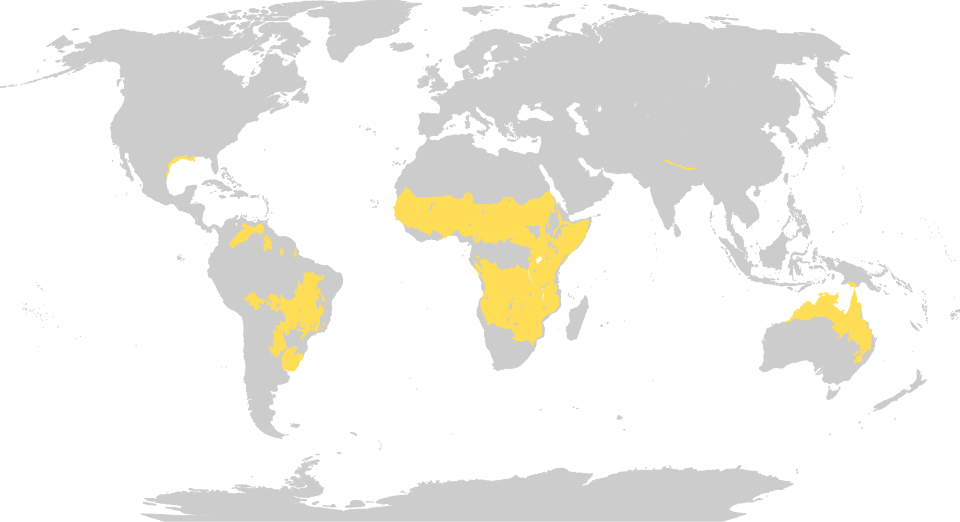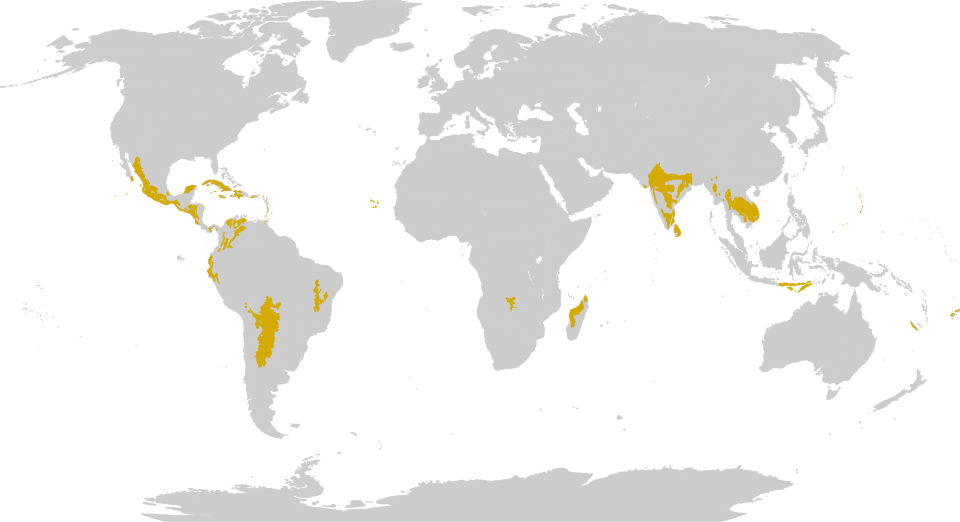Tropical and subtropical grasslands, savannahs, and shrub-lands (TSG)
- Shanti Bants
- Aug 26
- 2 min read
Large expanses of land in the tropics do not receive enough rainfall to support extensive tree cover, resulting in unique ecosystems characterised by their distinctive vegetation and animal life. The tropical and subtropical grasslands, savannahs, and shrub-lands are defined by their rainfall levels, which typically range between 90–150 centimetres (35–59 in) per year. This amount of precipitation, while substantial, is often insufficient to sustain dense forests, leading to the prevalence of open landscapes. Furthermore, the distribution of rainfall can be highly seasonal, with the entirety of the year's precipitation sometimes falling within a narrow time frame of just a few weeks. This pattern of rainfall creates a dynamic environment where the growth and survival of plant and animal species are closely tied to the timing and quantity of rainfall.

African savannahs, in particular, serve as a transitional zone between forested or woodland regions and more open grassland areas. These ecosystems are characterised by a diverse array of flora, including iconic species such as acacia and baobab trees, as well as various grasses and low shrubs. The acacia trees exhibit fascinating adaptations to the harsh dry season; they shed their leaves to minimise water loss and conserve moisture, a strategy that allows them to survive in periods of drought. In contrast, the baobab tree has evolved to store significant amounts of water within its massive trunk, enabling it to endure extended dry spells. These trees not only provide essential resources for wildlife but also contribute to the overall biodiversity of the savanna ecosystems. Many of these savannahs are found throughout Africa, where they play a crucial role in the continent's ecological and cultural landscape.
The biodiversity associated with these habitats is particularly notable for the presence of large mammals that have evolved to take full advantage of the abundant forage available in these open landscapes. The large mammal faunas found in African savannahs and grasslands are among the richest in the world, showcasing a variety of species that have adapted to thrive in this unique environment. These mammals include well-known species such as elephants, lions, zebras, and giraffes, all of which play critical roles in maintaining the ecological balance of their habitats. Tropical and subtropical grasslands, savannahs, and shrub-lands are not limited to Africa; they are widespread across all continents except Antarctica. These ecosystems can also be found throughout South Asia and Southeast Asia, in the northern parts of South America, in Australia, and even in the southern regions of the United States. Each of these areas presents its own unique variations of grassland and savanna ecosystems, influenced by local climatic conditions, soil types, and the specific flora and fauna that inhabit them.





Comments